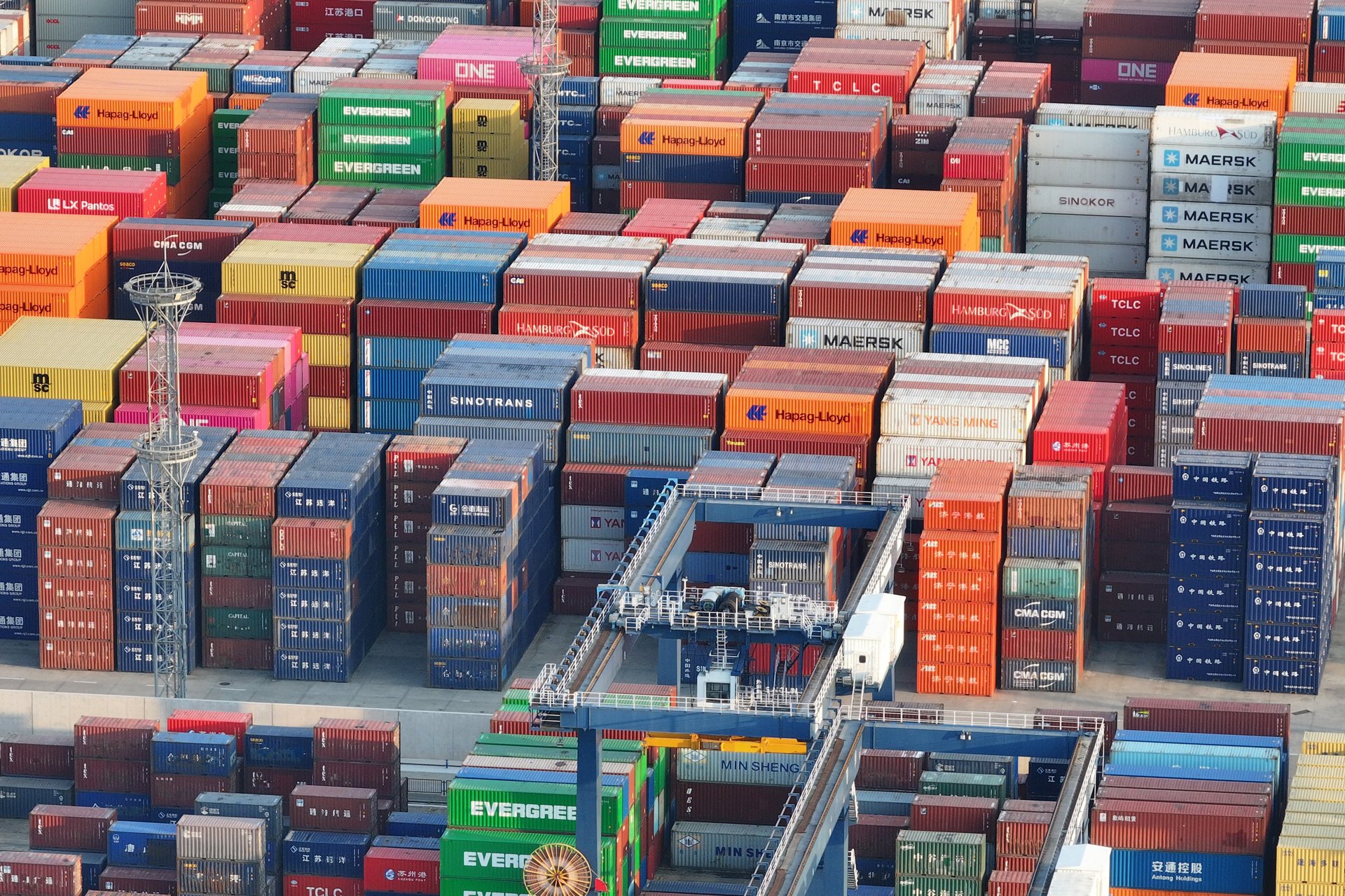Trump's new trade war could be very different
Supply chains have woven themselves into increasingly complex global knots, leaving American industry more exposed than before

A version of this article originally appeared in Quartz’s members-only Weekend Brief newsletter. Quartz members get access to exclusive newsletters and more. Sign up here.
President Donald Trump last week launched his second trade war with a 10% tariff on Chinese imports, with Beijing immediately unveiling retaliatory measures. The White House described the tariffs, which initially also threatened Mexico and Canada before they got last-minute reprieves, as part of a broader effort targeting trade gaps and fentanyl flows. Back in office less than a month, Trump’s escalating rhetoric suggests another drawn-out economic confrontation looms.
While this may seem like a replay of Trump’s first trade war, the world has changed. Supply chains have woven themselves into increasingly complex global knots since 2017, leaving American industry more exposed than before. The pandemic sparked urgent calls to reduce foreign dependencies and rebuild domestic manufacturing.
But transforming supply chains takes decades, not years — requiring new infrastructure, skilled workers, and entire industrial ecosystems. And that transformation relies on deep visibility into how supply chains actually function and where vulnerabilities lie, which was only partially achieved.
“We didn’t do enough of the supply-side analysis needed to truly address bottlenecks,” said Brandon Daniels, CEO of supply chain technology company Exiger.
Despite billions in government investment and repeated promises of reshoring, many U.S. manufacturers have actually grown more dependent on Chinese materials and components since the last trade war, including in strategic industries.
The Biden administration commissioned studies to identify critical minerals needed for everything from electronics to renewable energy. But in response to Biden’s chip ban, China restricted exports of vital materials like germanium, gallium, and antimony, which are essential in semiconductor and industrial manufacturing. In this industry, the U.S. has actually lost ground, shuttering its last antimony refinement facility in 2021.
The CHIPS Act, meant to revive domestic semiconductor manufacturing, shows both the promise and challenge of rebuilding supply chains. While new fabrication plants are under construction, they won’t produce the most advanced chips for years. Even these facilities face workforce shortages and continued dependence on foreign materials and components.
“More got spent on policy papers than on real changes to increase supply chain strength,” Daniels said.
Critical minerals aren’t the only issue. Russia’s invasion of Ukraine eliminated crucial industrial suppliers — including manufacturers of neon gas essential for semiconductor production and steel mills that served European markets. This forces more regions to compete for remaining supplies, driving up costs and increasing dependencies on China.
Even efforts to diversify manufacturing to Mexico, which accelerated after 2017, face new complications. While companies moved operations south of the border to avoid Chinese tariffs, many simply rerouted Chinese components through Mexican assembly plants.
“There was a push to move to Mexico, and China took full advantage of that as well,” he said.
The strategy of “friendshoring” — a term U.S. Treasury Secretary Janet Yellen introduced in 2022, describing it as an approach to achieve “free but secure trade” by favoring sourcing from allied nations like Mexico and Canada — hasn’t solved fundamental supply chain vulnerabilities. Even when manufacturing moves closer to home, many raw materials and components still originate in China, said Nicole DeHoratius, a professor at Columbia Business School who researches supply chains. “To what extent do we even have access to those raw materials, are we willing to get access to those raw materials? Those are all questions that have yet to be answered.”
In the years since the pandemic, companies have focused on building inventory buffers rather than addressing these deeper issues. But simply stockpiling goods doesn’t solve the underlying challenges, DeHoratius said. Any return of manufacturing to the US would require not just new facilities but development of an entire workforce — a particular challenge for high-tech industries.
“If we want to have these capabilities back home we need to be thinking about worker training,” she said. “What is the status of our workforce? What’s the capability of our workforce both in terms of numbers and then quality?”
Some industries may adapt quickly to the new trade barriers, having learned from past disruptions. But the deeper transformation of supply chains that policymakers envisioned — rebuilding domestic manufacturing capacity and reducing dependencies on China — remains largely unrealized.
“Purchasing teams have become very complacent,” said Ambrose Conroy, CEO of Seraph Consulting, a global operations and strategy consulting firm. “If tariffs last for 12-plus months at the levels being discussed, there are companies that will not make it because they can’t respond fast enough.”
The shape of this new trade war — which industries face tariffs, whether they extend beyond China to Mexico and Canada, and how trading partners retaliate — remains uncertain. What’s clear is that despite the experience of the first Trump administration and the pandemic, some companies are about to relearn painful lessons from the past decade.
“COVID woke us up,” Conroy said, “but a lot of companies fell back to their old ways and chased the lowest labor cost environment to save a couple of pennies. I don’t know if we really learned, but hopefully we’ve learned a little bit.”